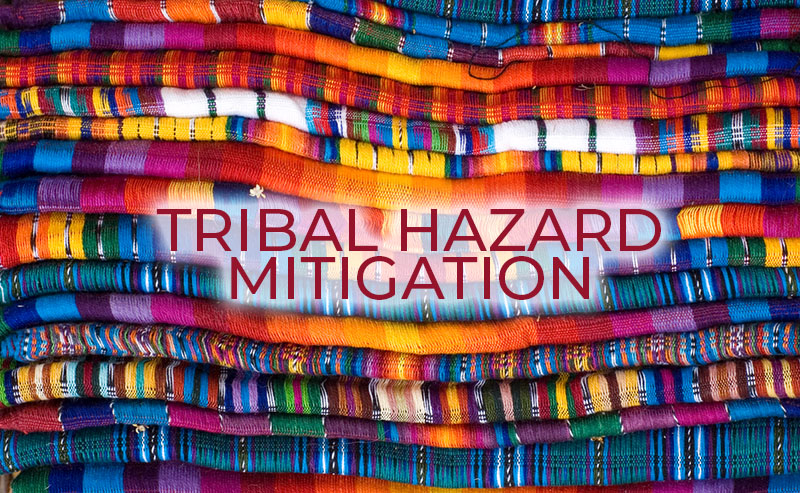The Federal Emergency Management Agency (FEMA) believes that Hazard Mitigation Plans (HMPs) are key to breaking the cycle of disaster damage, reconstruction and repeated damage from natural and human-caused disasters. In fact, the National Institute of Building Sciences now estimates that every dollar invested in mitigation saves six dollars in prevented damages (up from four from previous years). These numbers hold true for the largest of counties and cities across America, as well as its many tribal governments. Yours included.
According to the National Congress of American Indians (NCAI), there are currently 573 sovereign tribal nations (variously called tribes, nations, bands, pueblos, communities, and Native villages) that have a formal, nation-to-nation relationship with the U.S. government. These tribal governments are legally defined as “federally recognized tribes.” Two-hundred-and-twenty-nine of these tribal nations are located in Alaska; the remaining tribes are located in 35 other states.
Tribal governments, per NCAI, are an important and unique member of the family of American governments. They provide multiple programs and services, including, but not limited to, social programs, first-responder services, education, workforce development, and energy and land management. They also build and maintain a variety of infrastructure, including roads, bridges, and public buildings.
As you know, HMPs outline the risks and vulnerabilities associated with specific areas, along with the critical infrastructure that may be affected by them. Depending on your tribe’s location, such hazards may consist of flooding, drought, tornadoes, wildfires and winter storms; and the critical facilities might include schools, hotels and casinos, natural gas sources, and water treatment plants.
HMPs also include long-term strategies for protecting people, resources, and property in future hazard events, plus identify mitigation actions and projects to implement the mitigation strategy.
Think your tribe is too small or lacking the resources—people and money—to develop a comprehensive HMP? Or, that it’s simply not necessary given recent events, or the lack thereof? Think again.
Under the Disaster Mitigation Act of 2000 (Public Law 106-390), state, tribal, and local governments are required to develop a hazard mitigation plan as a condition for receiving certain types of non-emergency disaster assistance and FEMA grants to implement mitigation projects. Learn more by viewing FEMA’s Tribal Mitigation Plan Review Guide (Guide). It includes updated policy on, and interpretation of, the requirements for Tribal Standard and Enhanced Mitigation Planning found at 44 Code of Federal Regulations Part 201, Mitigation Planning.
Fortunately, federally-recognized tribal governments are eligible to apply for Hazard Mitigation Assistance (HMA) grant programs either as an Applicant directly to FEMA, or as a Subapplicant to a state/territory. There’s also help available for plan development, including tribal and stakeholder engagement, from numerous other sources. You just need to know where to look.
BOLDplanning, like the NCAI, knows that the essence of tribal sovereignty is the ability to govern and to protect and enhance the health, safety, and welfare of tribal citizens within tribal territory. As such, the company has helped numerous tribal governments to write, adopt and maintain FEMA-approved HMPs in a cost-effective and timely manner. Let us show you how we can do the same for you. Email info@BOLDplanning or call 615.469.5558 to find out more now.






